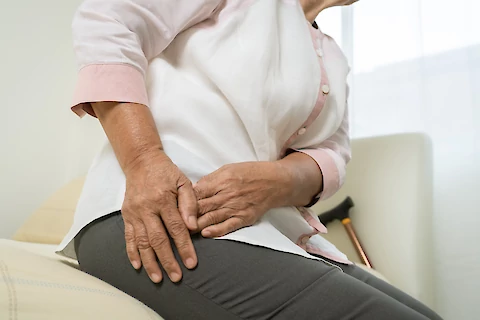
Recognizing Signs of Pain and Discomfort in the Elderly
Not everyone can communicate how they feel, and none of us like to see another in pain. We especially don't want another to be in pain without us knowing. Recognizing the signs of pain and discomfort is an important skill for a caregiver. Here are some signs and strategies for identifying and dealing with pain in the elderly.
Verbal cues
Ask
Evaluating pain can be as simple as asking. Some won't tell you they're in pain as they might feel embarrassed or that they don't want to be a burden. Others might just accept their pain as a symptom of getting older. For these reasons, your first step is to ask if they're feeling any discomfort or pain.
Listen
There are many words to describe pain, and some are more obvious than others. If you hear them complaining about discomfort, strain, or a cramp, this could be their way of letting you know that they're actually hurting. Other words people use to describe pain include:
- Ache
- Sore
- Throb
- Sting
- Twinge
- Spasm
- Stiffness
- Burn
Listen carefully to the words they use to see if they're pointing to a bigger issue than they let on.
Severity of pain
It's one thing to say we're in pain, but it's another to convey the level of pain we feel. We're all familiar with the 1-10 pain scale that ranks pain as follows:
0 = no pain
1-3 = mild pain
4-6 = moderate pain
7-10 = severe pain
The reason we use numbers is that pain is so subjective. This scale points to the level of pain that a person has experienced. For example, when one person says they have a headache, they might rate it a 4, but if you had the same headache, you might rate it a 6. What's important is the level of pain they feel in relation to their experiences.
Another useful tool is The Faces Pain Scale-Revised (FPS-R). This scale has you point at a facial expression to illustrate your level of pain. For some, this gives more accurate results as to the level of pain they're feeling.
Body language
While words say a lot, our body language can say much more, especially for those who struggle to communicate. This is why it's important to pay attention to body language, when a person is moving and when they're still. There are several obvious and less obvious signs that a person is experiencing discomfort or pain. Some of these signs are:
- Tears
- Tightly closed eyes
- Knitted brows
- Wrinkled forehead
- Constant repositioning to get comfortable
- Restlessness
- Clenched fists
- Groaning
- Whimpering
- Stiffened movement
- The body held rigidly in places
Mood
Observing a person's mood is another way to tell if they might be in pain. Decreased activity and decreased appetite are common signs, as is trouble sleeping. While these might be symptoms of a lot of issues, they give you a clue that something is not right.
What can you do?
Your job isn't to cure their pain. Your purpose is to provide care and support and to help them get the help they need. If their pain is extreme, uncontrolled, or persistent, it's time to seek professional help from a medical provider.
Resources
There are two great free resources for identifying and evaluating signs of pain and discomfort. "Pain in Older People: Reflections and experiences from an older person's perspective" gives a unique perspective from the point of view of several elderly people who struggle with pain. It is enlightening to hear what they feel and why they don't always share their experiences.
The second is "Assessing Pain in Your Family Member with Dementia: A Toolkit to Support Caregivers" from The University of Iowa College of Nursing. This gives you tools and strategies for helping others cope with pain. While geared towards those with dementia, it's a helpful read for everyone.
How we can help
At Senior Helpers, we're here to provide you with the best care and support. If you find yourself with questions or concerns about being or finding a caregiver, contact us today for more information about how we can help you.